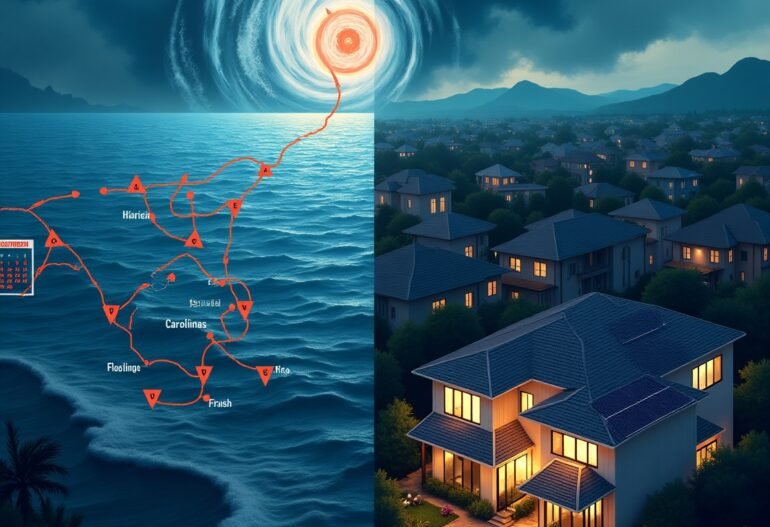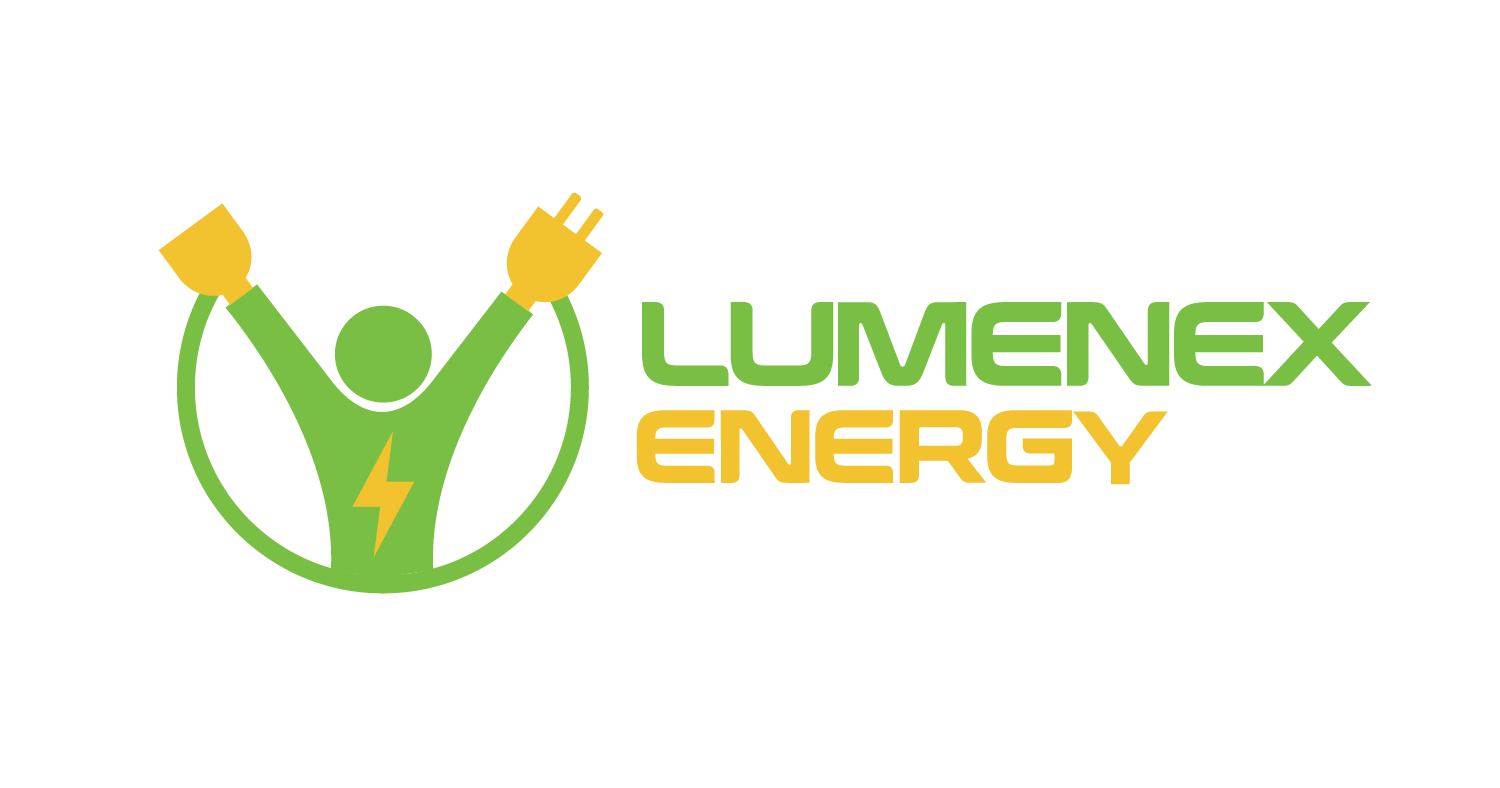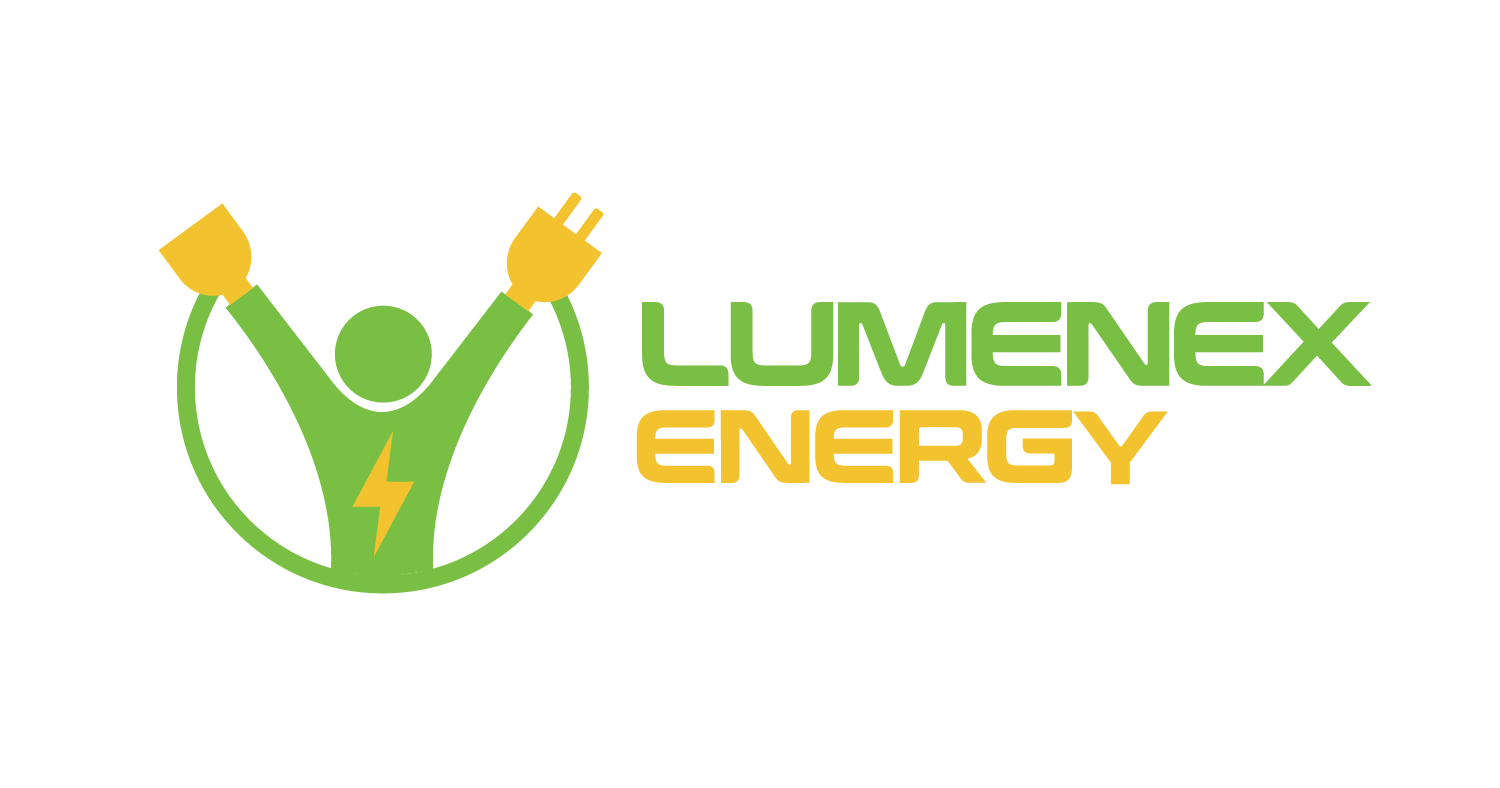Matters More Than Ever
It is also the peak hurricane season in the United States, a time of year when the danger of prolonged power outages is most likely to occur in areas of the U.S. located in the south and along the coastline. The NOAA forecasts 2025 as one of the busiest hurricane seasons in years, so even a flashlight and canned food supplies are a solution that homeowners and businesses look to in light of such predictions.
This is the place where solar energy systems with battery reserves excel, providing stormproofing, not just through storms, but also energy self-sufficiency, reduced power charges, and eco-friendly advantages even after the clouds part.
The Escalating Risk: Why Hurricanes Are Getting Worse
Climate scientists are sounding alarm bells that hurricanes would emerge to be more intense, wetter, and destructive as a result of increasing ocean temperatures. The number of people affected increased in just one year, 2024, to:
- There were 6 hurricanes in the U.S, of which 3 had been category 3 and above.
- Power cuts affected more than 4.2 million customers with outages in Florida, Louisiana, Georgia, as well as the Carolinas.
- Power-related interruption damage was estimated to be more than 35 billion.
The conventional utility grids have been unable to handle this much load, and in particular, overhead transmission lines are susceptible to strong winds and uprooted trees.
What Happens When the Grid Fails?
The consequences of a hurricane unsettling the power grid turn out to be more than inconvenient:
- Up to 4 hours without refrigeration, and spoilage of food takes place
- The lack of heating or cooling results in a high risk of indoor heating or cooling
- Uncharged phones and collapsed networks because of loss of communication, blackouts
- Loss of life to people using oxygen machines, medical refrigerators or wheelchairs
This is the reason why numerous owners of American homes are turning towards installing a renewable energy backup system, that is, solar panels with battery storage units.
Solar + Battery Backup: A Lifeline During Hurricane Season
How does it work:
- The electricity produced by solar panels on your roof can be generated during the daytime.
- Other energy sources to your home battery (such as Tesla Powerwall, Enphase IQ, and FranklinWH).
- Once the power grid is knocked out, your unit will automatically be shifted to battery.
- Your house keeps operating important devices even when the district is in darkness.
Why Solar + Battery Is the Best Hurricane Preparedness Tool
- Strength Supply Energy
No dependency on deliveries of diesel or propane. The sun, with its stored battery reserve, is your source of energy.
- Automatic Transition
Enphase Encharge and Tesla Powerwall, and other systems swing to battery mode, without switching or engine starting (turning).
- Calm, Hygienic, and Secure
In contradiction to gas generators, which are loud, hazardous to use indoors, and produce CO2, solar batteries are as silent as a whisper and non-toxic to use.
- Grid Independence
During long-term power cuts, you do not have to rely on schedules of repairing the power grid or the works done on the damage caused by the storm.
- The Extreme Weather Tested
The tier 1 solar panels are Category 4 and 5 hurricane rated:
A hundred miles per hour wind resistance:
- 160 miles per hour
- Impact on 1-inch reported on 50 mph hail
- Coastal durability- Rain- and salt-mist repellent

Long-Term Savings & Incentives
Getting solar and batteries is not about storm safety, but it is a good business move.
Ongoing Benefits:
- Save any amount of money on electricity up to 60 to 100 percent, depending on the system size
- When utility prices are high (time-of-use savings), store solar power to use it at these higher rates
- Home value increases by $15,000 to $30,000 according to Zillow
2025 Incentives You Should Know:
- Federal Tax Credit (ITC): 30 percent off system price
- State Solar Rebates: Pinchme offers solar rebates to its citizens in states such as California, Texas, Florida, and the Northeast
- Net Metering: In most states, you can sell excess power back to the grid
Top U.S. Regions That Urgently Need Solar + Battery Backup
The risks of blackout in some areas of the United States have been increasingly affected by climate change, however, given the extreme weather, as well as the instability of the grid. Whoever lives in these risk-prone places will not treat solar power with battery backup as a luxury; rather, it is becoming a need sooner rather than later. Take a look at the distribution of backup power solutions where they are most important:
Florida: Florida has, by far, been the state at the top in terms of the frequency of hurricanes, as well as in terms of solar adoptions. The dwellers of this place experience not only the strong storms but also coastal flooding and lengthy power cuts. The state of Florida is the worst place in terms of storm resilience since it has a sunny climate and is susceptible to grid disturbances, which makes it a prime candidate to demonstrate why solar with battery storage is the key to such resilience.
Texas: Blackout occurrences have increased disturbingly in Texas, this is not only because of hurricanes along the Gulf Coast, but that they come out of the blue due to winter storms. The independent power grid that belongs to the state ( ERCOT ) has demonstrated instability, especially in recent years, as millions of people lost their electric power in critical weather events. Solar and batteries in Texas give homeowners a measure of energy security in the event of a grid breakdown.
North Carolina and South Carolina can be described as well-known for big hurricanes and summer thunderstorms, resulting in outages. As the population of these states continues to grow, and the electrical infrastructure grows older, there is a growing need to have resilient energy systems. Even the backup storage panels can keep critical systems enabled even in the case of power outages.
Louisiana is also at the frontline of most of the major storms, thereby hurricanes, flooding, and storm surge being among their greatest risks. The loss of the power grid is likely to occur during the period following the success of tropical storms. Battery storage in those situations will even be a lifesaver, as it will help to ensure that homes remain charged as utility companies work to reinstate the grid.
California has a special risk; it encounters outages and rolling blackouts due to wildfires. Because of the Public Safety Power Shutoffs (PSPS) and the growth of energy consumption, it may shift the power disconnection to be fire potentially. Solar plus storage systems enable Californians to be powered even when there are such planned or emergency shutdowns.
The case of Puerto Rico reminds me of the necessity to be energy resilient. The grids on the island have been weak and have taken a long time to heal after they were destroyed by the disaster of Hurricane Maria. Nowadays, battery storage has become a requirement rather than an option when it comes to new solar installations. Solar energy has battery backup: in case of an emergency, it is less of a convenience, but a matter of life or death to the residents.
How to Choose the Right Solar + Battery Backup System for Storm Season
With more hurricanes and other extreme-weather calamities predicted, increasing numbers of homeowners are opting to go solar with battery backup, so the lights can stay on no matter what takes place on the grid. Doing the right system is not as simple as picking some panels and simply plugging in a battery. It is about knowing what you need and making wise decisions that would maximize safety, efficiency, and peace of mind.
Capacity of Battery:
Lasting Power:
The available battery capacity determines how the grid could fail and how much electricity will be available at that time. Consider your goal for backup:
Essential Back-up ( 10kWh): This is extremely helpful to operate basic appliances such as a fridge, lights, a modem, and charge devices. Best suited to short outages or low-end emergency requirements.
Mid-Level Backup (13.520 kWh): Gives you the opportunity to run fans and small portable AC units, or a sump pump to make your experience more comfortable and functional through extended power interruptions.
Whole-Home Backup (30+ kWh): You require them should you want to roll power an entire home of HVAC and/or well pumps or several large appliances over a prolonged time. Usually, 2 or more batteries are needed.
Critical Load Panel: defend what is most valuable
A critical load panel is another circuit panel or board that helps you to save efficiency in the use of your battery backup. It doesn’t work as hard to keep your entire house powered during an outage; instead, it only maintains the appliances that you need, which means your battery lasts longer.
Appliances suggested to be connected in your critical load panel:
- Fridge and freezer
- We sell nearly every kind of stuff found at home, including medical equipment (CPAP machines).
- The necessary lighting (kitchen, hallway, bathrooms)
- Wi-fi router and charging station
- Room-specific climate-control fans or Fans
Real-Time Monitoring: be in control
In addition, modern solar + battery systems give access to smart monitoring tools, so you can actually observe what goes on with your energy, wherever you are, on your phone.
A good monitoring system follows:
- Solar Production: This is the ultimate output of your panels at a certain period in time, in kilowatt-hours (kWh).
- Battery Level – the amount of stored energy and how fast it is expended
- Household Energy Use – to be able to have a choice in a situation of a blackout
Expectations After You Install
- Solar + battery testing
- Tie-in to your utility (in the case of grid-tied)
- PTO (Permission to Operate) & Final inspection
- Access on a mobile app in real-time
- Stress-free in times of storms




